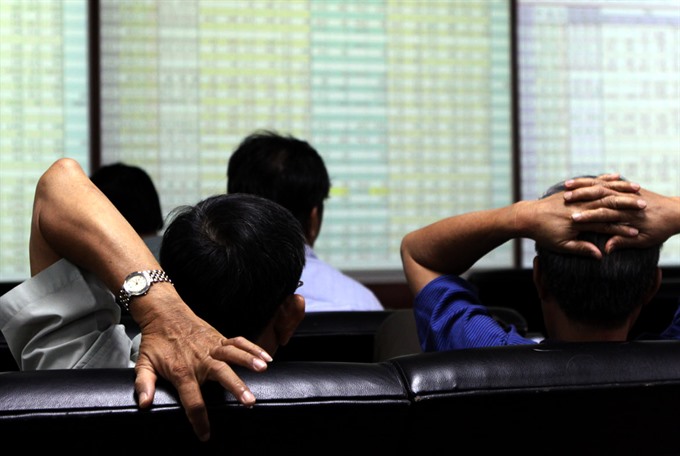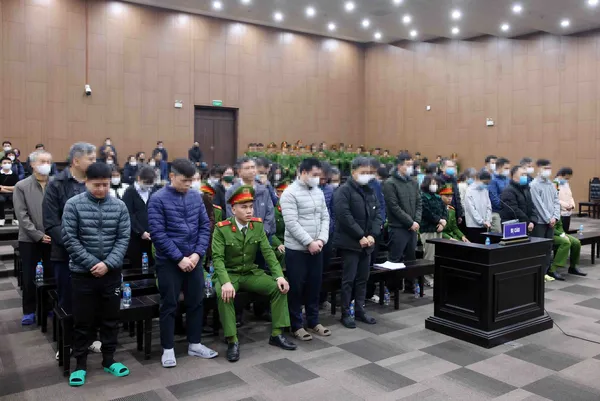 Economy
Economy

Vietnamese shares declined on Thursday after rising for four consecutive sessions, due to large-cap stocks underperforming as investors sold in pursuit of short-term profits.
 |
| An investor follows transactions at Việt Dragon Securities Company (VDSC) in Hà Nội. — VNA/VNS Photo Phạm Hậu |
HÀ NỘI — Vietnamese shares declined on Thursday after rising for four consecutive sessions, due to large-cap stocks underperforming as investors sold in pursuit of short-term profits.
The benchmark VN Index on the HCM Stock Exchange dropped 0.51 per cent to close at 1,115.79 points. It have gained total 4.2 per cent in the previous four days.
The HNX Index on the Hà Nội Stock Exchange was down 0.74 per cent to end at 127.10 points. The index inched up 0.60 points to end at 128.05 points on Wednesday.
More than 307.04 million shares were traded on the two local exchanges, worth VNĐ8.7 trillion (US$439.2 million).
The market trading condition was ruled by declining stocks, which were dominant over gainers by 280 to 201, while 248 other stocks ended flat.
Large-cap stocks returned to the negative territory as 17 of the 30 largest ones by market capitalisation in the VN30 Index suffered from investors’ sell-off pressure.
The UPCOM Index on the Unlisted Public Company Market (UPCoM) edged down 0.45 per cent to finish 59.82 points. The unlisted market index gained 0.03 per cent to finish at 60.09 points in the previous session.
Notably, Bình Sơn Refining and Petrochemical Company Limited (BSR) was heavily bought on UPCom, reaching the ceiling price as other petroleum stocks declined.
Before ATC session, large-cap stocks corrected together. Banking and petroleum stocks could no longer maintain their momentum. Rather, steel stocks such as HPG, HSG, NKG and the securities sector with SSI, HCM and SHS gained.
Foreign investors were net sellers of VNĐ167.13 billion on HOSE, concentrated on HCM (VNĐ95.8 billion), HDB (VNĐ45.8 billion) and VCB (VNĐ30.6 billion). In addition, they sold a net of VNĐ31.11 billion on the HNX.
The VN Index ended the last trading session of February at 1,120 points, marking an increase of 14 per cent compared to the beginning of this year, making it world’s fastest-growing market in the same period, followed by Brazil, Russia and Argentina.
The breakthrough in Việt
According to the Prime Minister’s Document No 991/TTg-ĐMDN, 2018 will be the peak year for equitisation of State-owned enterprises (SOEs) and State capital divestment, with MobiFone, VTC, Genco 1 and 2 and Saigon Jewelry Company Ltd (SJC) conducting IPOs, attracting large cash flow from domestic and foreign investors.
In January, the initial public offerings (IPO) of Việt Nam Rubber Corporation, PetroVietnam Oil Corporation, Bình Sơn Refining and Petrochemical Company and PetroVietnam Power Corporation were conducted successfully. They were three of the largest SOEs by capitalisation among the 69 SOEs listed in the equitisation plan of 2017.
Another major push was caused by the strong inflows of foreign capital. Foreign traders were responsible for net buying values of nearly VNĐ12 trillion in the first two months of the year, after total net purchases of VNĐ28 trillion in Việt Nam’s stock market in 2017.
According to Bảo Việt Securities Company (BVSC), the VN Index is forecast to still move sideways in the next sessions with increasing selling pressure on large-cap stocks which have gone through strong uptrends.
Meanwhile, the BIDV Securities (BSC) said in its report that the market will remain volatile. It recommended investors observe when the division spreading across the market, which will push the risk to a higher level. — VNS




